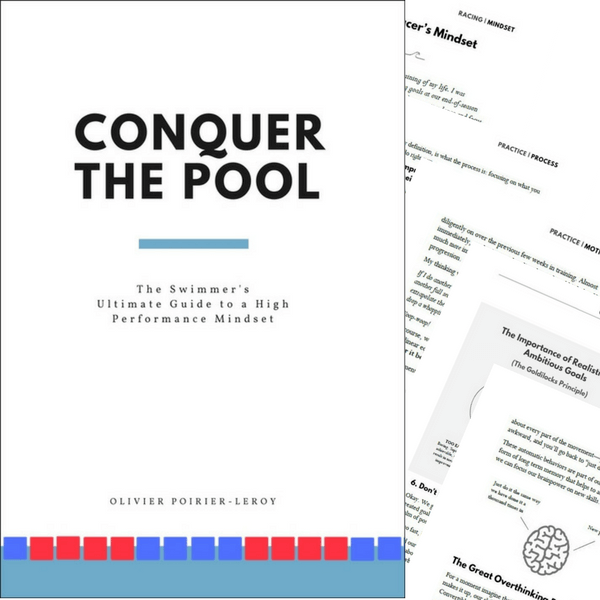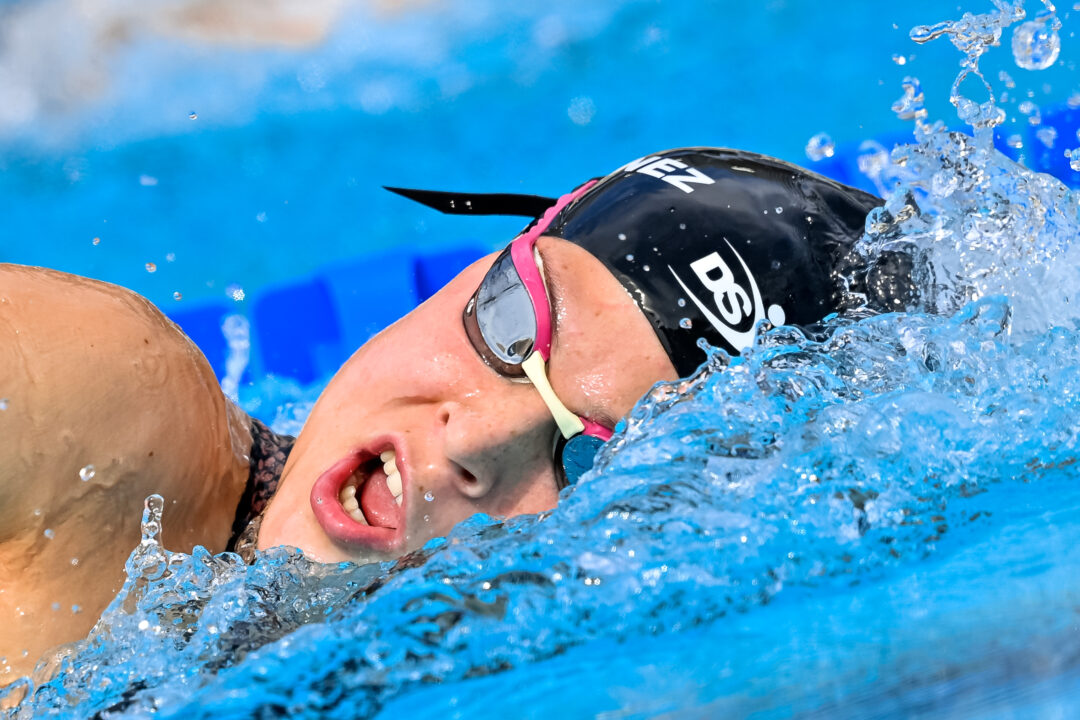Learn how stroke steadiness can boost your freestyle speed along with some tips to build a smoother, steadier freestyle stroke.
Stroke rate. Stroke length. SWOLF.
When it comes to swim stroking in the pool, there’s a lot of dimensions and ways to measure how efficiently we are swimming.
So why not add another one?
Here’s why stroke steadiness might be the skill you are looking for to improve your freestyle.
What is Stroke Steadiness?
Stroke steadiness is a measure of consistent your stroke timing is from one pull to the next.
Imagine swimming with the smooth, consistent rhythm of a metronome. Boom, boom, boom. Each stroke lands exactly where it should. Every catch, pull, and recovery on beat.
Now imagine the opposite: jittery, random stroke that speed up, slow down, and fall apart under fatigue. That’s what poor stroke steadiness looks like, and it’s a hidden anchor on your speed in the water.
Some Research on Stroke Steadiness
A study by Lopez-Plaza et al (2024) titled Stroke Steadiness as a Determinant Factor of Performance in 100 m Freestyle in Young Swimmers dug into this exact topic.
They compared the stroke timing of elite and non-elite age group swimmers in a flat-out 100m freestyle time trial.
The big takeaways?
✅ The elite swimmers had way more consistent strokes than the non-elites—even when they got tired. The timing between strokes remained metronome-steady.
✅ Non-elite swimmers had jittery, inconsistent timing. Like a terrible drum and bass song.
✅ Stroke steadiness scores was 48–65% worse in the non-elite group of swimmers.
✅ And the kicker: stroke steadiness explained 37-55% of the difference in speed between the faster and slower swimmers.
Let that soak in like a soggy swim towel.
Over a third of the speed difference was about how steady the swimmers kept their stroke.
Anyone who has seen one of the greatest freestylers of all-time, Russia’s Alexander Popov swim, even when sprinting, knows that smooth is fast.
How to Build Smoother, Steadier Strokes
Good news: stroke steadiness is a skill you can improve in the water. Just like how you work diligently to improve your underwater dolphin kick, stroke tempo, or hitting that early vertical forearm.
Here are some simple, proven ways to give your freestyle the smooth-over treatment:
👉 Use a swimmers snorkel
Snorkels are a great tool for encouraging more balanced strokes. Turning the head to breathe is one of the chief reasons stroke steadiness gets, well, unsteady. Choosing the right swim snorkel gives swimmers a chance to build muscle memory with a balanced and smooth stroke.
👉 Hit the Tempo Trainer
The FINIS Tempo Trainer Pro is a waterproof metronome that swimmers can use to match strokes to a desired tempo or stroke frequency. Perfect for giving swimmers the instant feedback required to drill a steady stroke.
👉 Count your strokes
Stroke counts automagically make you pay attention to the rhythm and distance you get with each stroke cycle. When tempo and distance per stroke break down, so does your stroke count.
Use stroke counting to highlight awareness of each pull and push rather than going through the unsteady motions.
👉 Resisted swimming
Resisted swimming tools like drag chutes, DragSox, or resistance tubing create extra resistance in the water, tightening up stroke timing and reducing those pesky dead spots in the stroke cycle. Short reps at around 75-85% effort are perfect highlighting how a smoother stroke cycle looks and feels when swimming freestyle.
The Bottom Line
Swim training is often about going faster and harder. More reps, faster intervals, increased resistance.
But there’s a lot of value in developing a freestyle that is smooth and steady. Not only will your stroke look good, but it will create a more efficient freestyle that is also fast.
At the end of the week, training cycle, or season, fast swimming isn’t just about being strong, but being steady and smooth, too.
ABOUT OLIVIER POIRIER-LEROY
Olivier Poirier-Leroy is a former national-level swimmer, author, swim coach, and certified personal trainer. He’s the author of YourSwimBook, a ten-month logbook for competitive swimmers.
 He’s also the author of the best-selling mental training workbook for competitive swimmers, Conquer the Pool: The Swimmer’s Ultimate Guide to a High-Performance Mindset.
He’s also the author of the best-selling mental training workbook for competitive swimmers, Conquer the Pool: The Swimmer’s Ultimate Guide to a High-Performance Mindset.
It combines sport psychology research, worksheets, anecdotes, and examples of Olympians past and present to give swimmers everything they need to conquer the mental side of the sport.
Ready to take your mindset to the next level in the pool?
👉👉 Click here to learn more about Conquer the Pool.

Oh my….how revolutionary – not!
Talking about steadiness, the name that immediately comes to mind an inch above everyone is Yevgeny Sadovyi, winner of 200m / 400m mens free-style in Barcelona 1992. Still see him progressing like a shark with no apparent effort … his free style is greatly missed!
He was doped up. Ended up with heart disease